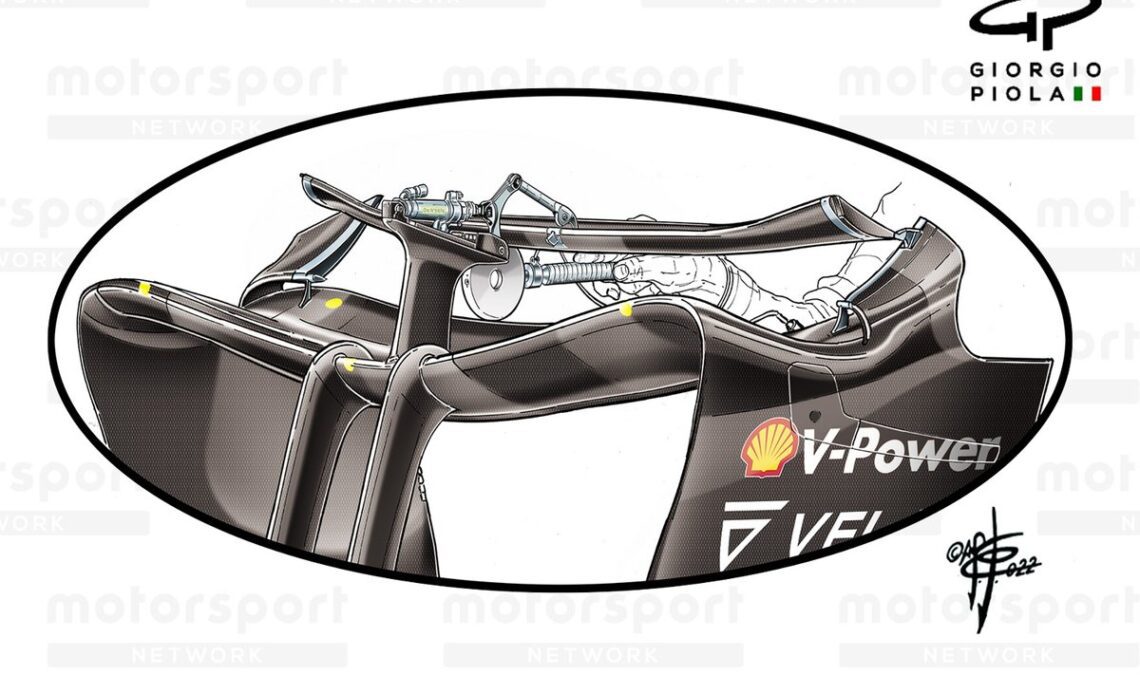Soon after the race, Mercedes driver Hamilton said he had never seen a car have such an edge over the opposition as the RB19.
“I’ve definitely never seen a car so fast,” remarked the seven-time world champion after finishing 25s behind the Dutchman in fifth, despite starting seven positions ahead thanks to the Red Bull’s Q2 engine issue.
“I think when we were fast, we weren’t that fast. I think it’s the fastest car I’ve seen, especially compared to the rest.”
Hamilton’s comments prompted a great deal of speculation regarding Red Bull’s top-speed superiority and just how it was being achieved.
While it is clear that Red Bull’s car has tremendous aerodynamic efficiency, much of the focus has been on the speed boost improvement that Red Bull appears to get from having its DRS open.
Contrary to the belief of many, there can be and are differences in the potency of DRS between the teams. A mandated maximum gap of 85mm can be opened between the mainplane and upper flap, which is checked by the FIA using a spacer, but its effectiveness can be tuned by means of the wings’ overall design features.
But rather than there being some trick element to what Red Bull is up to, the answer appears to boil down to something very simple: having a wing that was perfectly suited to the Jeddah circuit’s demands.
Ferrari F1-75 DRS check
Photo by: Giorgio Piola
Teams create a suite of rear-wing designs for the variety of tracks that F1 visits throughout the course of the season. These are often categorised as low, medium and downforce wings. However, there are often many more options in the suite of wings available than just one type for each level of downforce.
For many teams, the resource restrictions and cost cap have resulted in a reduction in the number of bespoke wing solutions when compared with the previous regulatory era. And with a low downforce, high-speed venue like Saudi Arabia featuring so early in the calendar some teams didn’t have a more bespoke option in their suite available just yet.
Red Bull did however, with the new wing following the same general layout as the version used in Bahrain but featuring adaptations to the mainplane, upper flap and endplate transitions to lower downforce and drag.
Furthermore, Red Bull only ran one beam wing element, which also results in changes to the behaviour of the diffuser and rear wing. This relationship also has a bearing on how the car performs when DRS is enabled and disabled, meaning it’s always a…
Click Here to Read the Full Original Article at Autosport.com – Formula 1 – Stories…

